Updated: 10-Dec-2019
See Allied Signal
See Garrett
See Honeywell
-AirResearch was a division of Garrett in Phoenix, Arizona and was considered the most important supplier of small auxiliary turbines from 30 to 850 hp.
-Since their start they also build power plants for airplanes and helicopters, as well as turbochargers and its controls for piston engines.
-This company had an extensive experience in turbochargers, especially in World War II, just like GE.
-They both provided several brands of American engines.
-This experience resulted in 1946 in the GTC 43/44 with 50 hp, which had the shape of a suitcase.
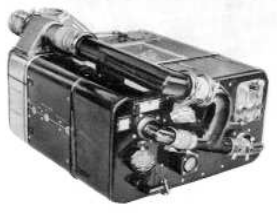
“GTC 43 / 44”
-Soon they obtained military contracts for the adaptation of these turbines on board aircraft as auxiliary power plants (APP), which varied according to the acronym:
GTC = Gas Turbine Compressor.
GTP = Gas Turbine Power.
GTG = Gas Turbine Generator.
GTU = Gas Turbine Universal.
GTCP...
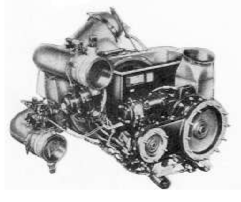

“Auxiliary power turbines”
-The varieties of the 85 GTC and GTCP models can significantly be emphasized as ground and airborne units (eg in the C-130 Hercules), the 70 series in the KC-130, or GTG-250 as intervention units on land for projectiles such as Sergeant, Jupiter, etc.
-The GTCP-105 started the turbojets J-79 for the supersonic bomber B-58 Hustler, being able to start pairs of engines.
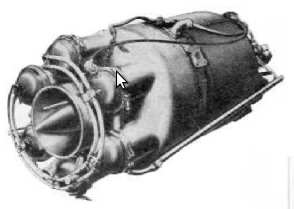
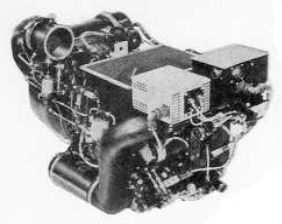
“Auxiliary power turbines”
-A common feature of the AiResearch / Garrett auxiliary power turbines is the use of individual can-annular combustion chambers.
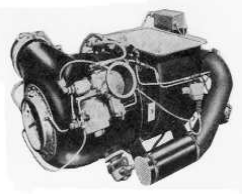
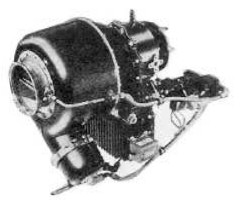
“Auxiliary power turbines”
-However, for many decades it was the TPE-331 turboprop that had been the most characteristic engine of the brand. It had been installed in numerous military and civil aircraft. It gave a power of around 700 hp in most of the series, but surpassing 900 hp in some of them (such as those installed on the Swearingen Merlin).
-It is very versatile in the way of mounting the gearbox for the propeller above the longitudinal engine shaft, or below it, with the air intake being on the opposite side as the case may be.
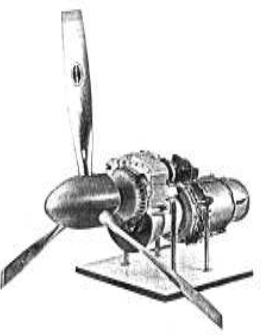
“TPE-331”
-They have a high spinning speed in the gas generator (around 42,000 rpm) but the propeller spins at 2,000 rpm.
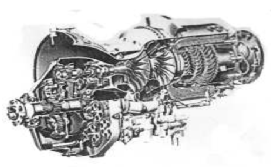
“TPE-331, upper view”
-It is not a free turbine, this is to say, the generator shaft's transmission with its compressor and turbines are directly connected to gearbox and propeller.
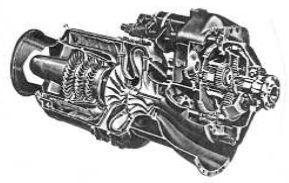
“T-76”
-TPE-331 received the military designation T-76.
-Although essentially a turboprop, there are also turboshaft versions. Unlike auxiliary plants seen above, where can-annular combustion chambers were used, these engines have annular ones with reverse flow.
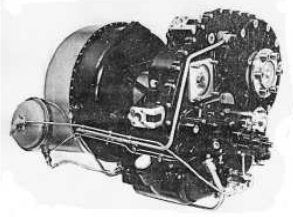
“TSE--36”
-The TSE-36 turboshaft delivers 240 hp and was selected for the power plant of the Enstrom T-28 helicopter. It is a direct derivative of the GTC-36 that was installed in civil and military aircraft as an auxiliary power unit, and therefore with a single can-annular combustion chamber.
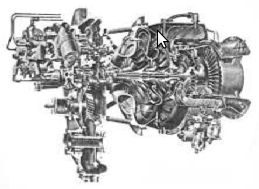
“TSE-231”
-The TSE-231 develops 474 hp at take off with standard conditions and 400 hp maximum continuous. This power is obtained with only 174 lbs of weight.
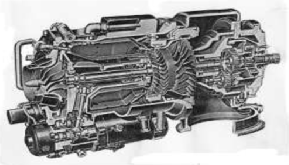
“Starter for the TF-41”
-An interesting one is the turbine engine that was used for starting the main engine installed on TF-41, being able to get it started in 30 seconds with only 100 hp. It was created for the Navy's A-7D Corsair.
-After the TPE-331, the next important AiResearch / Garrett product is the TFE-731 turbofan.
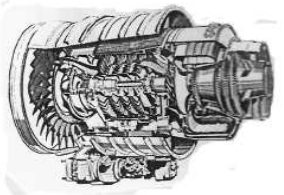
“TFE-731”
-The general approach corresponds to most two-spool turbofans. It is a product of the 1970`s, but it maintains the reverse-flow combustion chamber. Seeking its roots, we find them in the auxiliary power units of the McDonnell-Douglas DC-10. The power began with a thrust between 2,800 and 3,600 lbs. It also maintains a high spinning speed so it has a gearbox to lower the low pressure turbine 27,000 rpm to the fan's 11,500 rpm.
-They are widely used in military training aircraft such as the CASA 101 and in air taxi and business aviation, where it initiated with success in the Learjet 35/36.
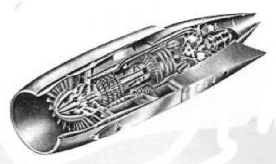
“ATF-3”
-An interesting derivative of this engine is the ATF-3 with an unusual gas flow circulation into the combustion chamber and even more unusual are the engine outlet ports at half the engine's length, all around it through several ports. Its purpose is to reduce the emission of infrared rays, since these ports emit inside the fan's air bypass-duct. It gives 5,000 lbf of thrust.
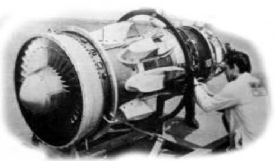
“ATF-3, exit ports shown”
-Another turbofan is the TFE-36. It has the same "core" as the TPE-331, except for the gearbox, which is replaced by a high efficiency fan. In fact it is a military T-76 that has a fan installed instead of a propeller. It has a planetary instead of superimposed gear. It was used in the USAF's Fairchild training aircraft.
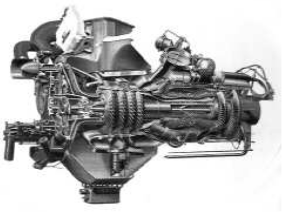
"600 Series"
-Other more modern auxiliary power turbines are the 600 and 700 series, etc.
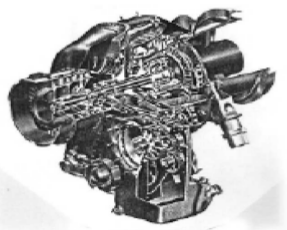
"700 Series"
-The company also built engines for cruise missiles, etc.
-They were small and expendable engines. They used the code ETJ = Expendable Turbine Jet.
-At first they used components from common turbochargers like the T18A, for engines that delivered 100 lbf of thrust being able to reach 200 lbs. easily, which is the case of the ETJ-131 with the following designation of the company: Mod 1030.

“ETJ 131 -drawing-”
-The ETJ-331 could give between 500 and 1,000 lbf of thrust, and it had a certain conventional turbojet shape.
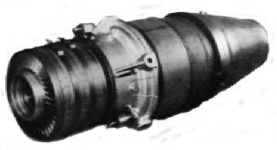
“ETJ-331”
-The 1,000 lbf ETJ-341 (sometimes referred to as ECJ-341), is reusable and destined for RPV vehicles.
-Now, an AiResearch rocket engine appears in a book and this engine was used in the Bell Eagle XAAM-N-10.
From Appendix 6: We encounter an engine of this brand that is used for Laminar Flow Control (LFC) on the wing.
-The engine is situated backwards under the wing. The aspiration performed within the "drawer" of the wing that has slots in the top surface along the wing itself.
-This maintains control over the boundary layer as well.
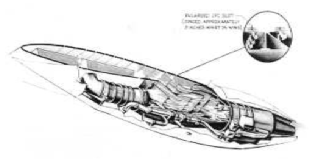
“Installation of an AiResearch for LFC”
Engines of AIRESEARCH
Model: 600 series

"AirResearch - 600 series"
Model: 700 series

"AirResearch - 700 series"
Model: ATF-3

"AirReseach - ATF-3"
Model: ETJ-131

"AirResearch - ETJ 131"
Model: ETJ-331
Arquitecture: Turbojet
Compressor/s: 0
Combustion chambers: 0
Turbines: 0
Power / Thrust: --- / 1000 Lbf
Weight:
ETJ = Expendable Turbine Jet.
The ETJ-331 could give between 500 and 1000 lbs of thrust, and with a certain conventional turbojet shape.

"AirResearch - ETJ 331"
Model: ETJ-341
Arquitecture: Turbojet
Compressor/s: 0
Combustion chambers: 0
Turbines: 0
Power / Thrust: --- / 1000 Lbf
Weight:
The 1000 lbs ETJ-341 (sometimes referred to as ECJ-341), is reusable and destined for RPV vehicles.
Model: GTC series GTCP...)

"GTC 43 / 44"
Model: GTG series
Model: GTP series
Model: GTU series
Model: TFE-36
Model: TFE-731

"AirResearch - TFE-731"
Model: TPE-331 (T-76)

"AirResearch - TPE-331 upper view"
Model: TSE-231

"AirResearch - TSE-231"
Model: TSE-36

"AirResearch - TSE-36"


